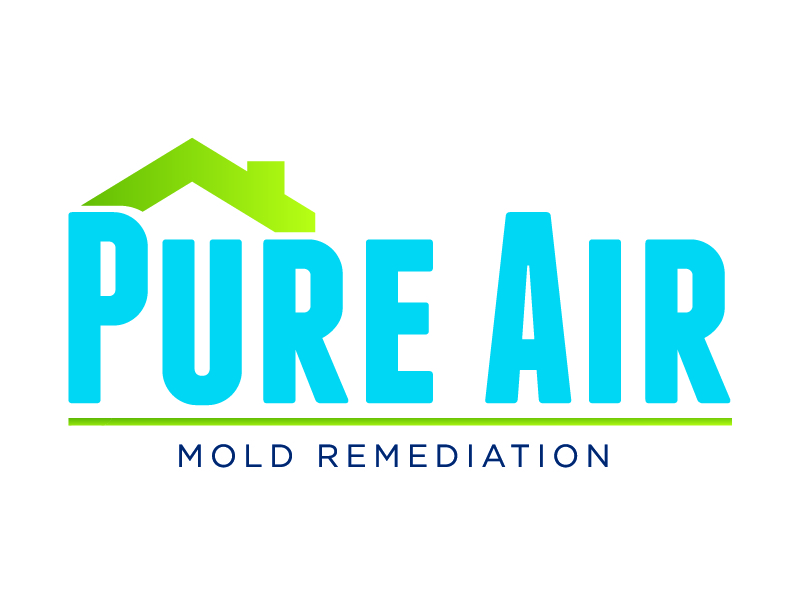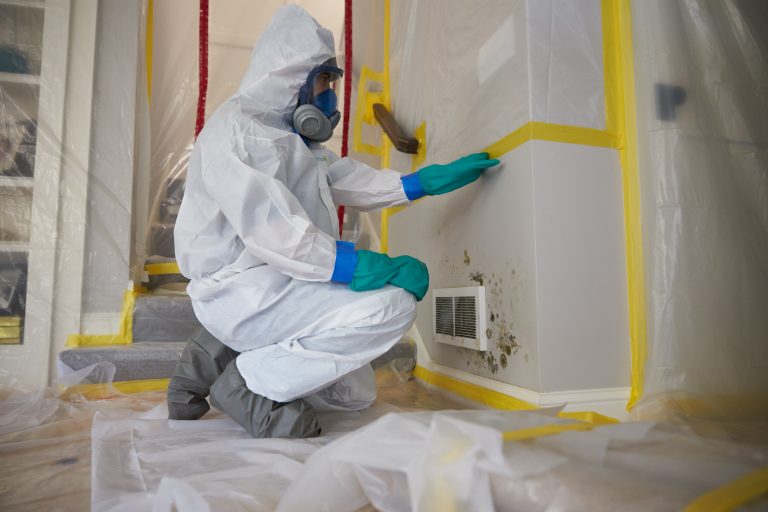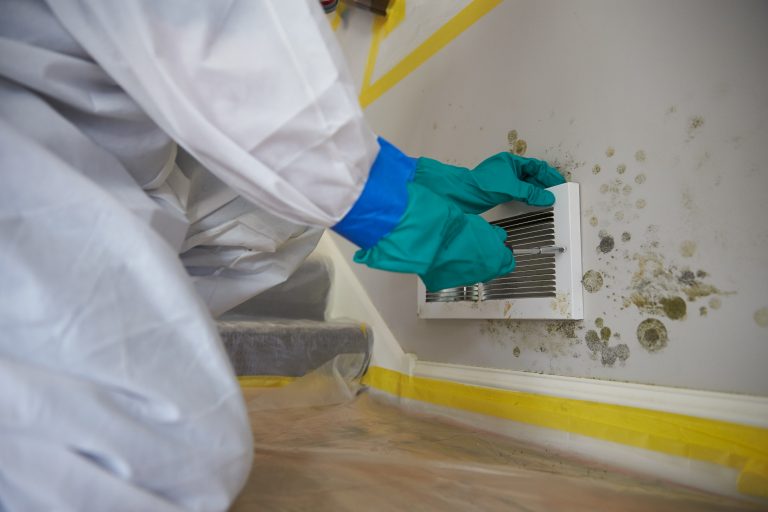Did you know that mold growth can be a common problem in many households? If you’re facing this issue in Lexington, then you’re in luck! Mold Remediation Lexington is here to provide you with the best solutions to tackle mold infestations head-on. With our expert team and top-notch equipment, we aim to create a safe and healthy environment for you and your loved ones. Say goodbye to mold worries and hello to a fresh, clean space. Trust Mold Remediation Lexington to take care of all your mold-related concerns.

Understanding Mold
Mold is a common type of fungus that grows in damp and humid environments. It thrives on organic materials such as wood, paper, fabric, and even food. Mold spores are invisible to the naked eye and can easily spread through the air. While mold serves a useful purpose in breaking down dead organic matter in nature, it can become a problem when it starts growing indoors.
What is Mold?
Mold is a microscopic organism that reproduces by releasing spores into the air. These spores are lightweight and easily travel through the air, finding their way into buildings and homes. Once inside, mold spores can settle on surfaces and begin to grow if the conditions are favorable.
Common Types of Mold
There are various types of mold, but some of the most common ones found indoors include:
-
Stachybotrys chartarum (black mold): This type of mold is often associated with water damage and can release mycotoxins, which are harmful to human health.
-
Aspergillus: Aspergillus is a genus of mold that can cause respiratory problems, especially in individuals with a weakened immune system.
-
Cladosporium: Cladosporium is a mold commonly found in homes. It can trigger allergic reactions and is often found on fabrics, carpets, and wood surfaces.
-
Penicillium: Penicillium is a type of mold known for its distinctive blue or green color. It can cause respiratory issues, allergic reactions, and even infections in certain individuals.
Health Risks Associated with Mold Exposure
Exposure to mold can have adverse effects on your health. Some individuals are more sensitive to mold than others, and even low levels of exposure can cause health problems. Common health risks associated with mold exposure include:
-
Allergic reactions: Mold spores can trigger allergies and asthma in sensitive individuals, causing symptoms such as sneezing, coughing, watery eyes, and skin irritation.
-
Respiratory issues: Prolonged exposure to mold can lead to respiratory problems, including coughing, wheezing, chest tightness, and difficulty breathing.
-
Infections: Some types of mold, such as Aspergillus, can cause infections in individuals with weakened immune systems. These infections can affect the lungs, sinuses, and other parts of the body.
-
Toxic reactions: Certain molds, including black mold (Stachybotrys chartarum), can produce mycotoxins that are harmful to human health. Prolonged exposure to these mycotoxins can lead to a range of health issues, including neurological symptoms, respiratory problems, and even cancer in extreme cases.
Signs of Mold Presence
It’s important to be aware of the signs of mold presence in your home. Early detection can help prevent further mold growth and minimize the potential health risks.
Visible Signs
One of the most obvious signs of mold is visible growth on surfaces. Mold can appear as fuzzy or discolored patches on walls, ceilings, floors, or other surfaces. It may range in color from black, green, or brown to white or orange, depending on the type of mold.
Musty Odor
Another telltale sign of mold is a musty odor. Mold produces volatile organic compounds (VOCs) as it grows, which can give off a strong, unpleasant smell. If you notice a persistent musty odor in your home, it’s likely an indication of mold growth.
Allergic Reactions
If you or your family members experience allergic reactions that seem to worsen when you’re at home, mold could be the culprit. Symptoms may include sneezing, coughing, stuffy or runny nose, itchy or watery eyes, and skin irritation. If these symptoms improve when you’re away from home, it’s worth investigating for mold presence.
Causes of Mold Growth
Understanding the causes of mold growth is essential in preventing and addressing mold issues in your home.
Excess Moisture and Humidity
Mold requires moisture to grow, so areas with high humidity levels or excessive moisture are more prone to mold growth. Bathrooms, kitchens, basements, and areas with plumbing leaks or poor ventilation are common areas where mold can thrive.
Water Leaks and Intrusion
Water leaks from pipes, roofs, or windows can create damp environments that are ideal for mold growth. If left unaddressed, water damage can lead to extensive mold infestations.
Poor Ventilation
Insufficient air circulation and poor ventilation can contribute to increased moisture levels in your home. Without proper ventilation, excess moisture can accumulate in bathrooms, kitchens, and other areas, providing a breeding ground for mold.
Condensation
Condensation occurs when warm, moisture-laden air comes into contact with cooler surfaces. This can happen around windows, pipes, and walls, especially in areas with high humidity levels. The resulting moisture provides an environment where mold can thrive.
Importance of Mold Remediation
If you discover mold in your home, it’s crucial to address the issue promptly through mold remediation. Ignoring mold growth can lead to a variety of problems, both for your health and your property.
Health Benefits
The primary reason for mold remediation is the protection of your health and well-being. Mold can release spores and mycotoxins into the air, which can be inhaled and cause respiratory issues, allergies, and other health problems. By removing mold growth and addressing the underlying moisture issues, you can create a healthier living environment for yourself and your family.
Preserving Property Value
Mold growth can cause significant damage to your property if left unchecked. It can weaken structures, stain and deteriorate surfaces, and even lead to rot and decay. By promptly addressing mold issues through remediation, you can prevent further damage, preserve your property’s value, and save on costly repairs in the long run.
Preventing Structural Damage
Mold can thrive on organic materials such as wood, drywall, and insulation. Over time, mold growth can compromise the structural integrity of your home. It can weaken building materials and potentially lead to structural damage. Mold remediation helps prevent further damage to the structure of your home, ensuring its long-term stability and safety.

Mold Remediation Process
Mold remediation involves a comprehensive process to safely and effectively remove mold growth from your home. The process typically includes the following steps:
Initial Assessment and Inspection
A professional mold remediation service will start with a thorough assessment and inspection of your property. They will identify the extent of the mold growth, determine the underlying causes, and create a remediation plan tailored to your specific situation.
Containment of Affected Area
To prevent the spread of mold spores to unaffected areas of your home, the contaminated area will be carefully contained. This may involve sealing off the affected space with plastic sheeting and using negative air pressure machines to ensure that mold spores do not escape into other areas.
Removal of Mold-infested Materials
Mold-infested materials, such as drywall, insulation, or carpeting, will need to be carefully removed to eliminate the source of mold growth. This process may involve cutting out and disposing of affected materials in sealed bags to prevent cross-contamination.
Cleaning and Disinfection
Once mold-infested materials are removed, the affected surfaces will be thoroughly cleaned and disinfected. This helps remove any remaining mold spores and prevents future mold growth. Specialized cleaning agents and techniques will be used to ensure effective mold removal.
Drying and Dehumidification
After cleaning, it’s crucial to dry the affected area thoroughly. This helps prevent moisture from returning and creating conditions for mold to grow again. Commercial-grade dehumidifiers and drying equipment may be used to expedite the drying process.
Disposal of Contaminated Materials
All mold-infested materials that were removed during the remediation process need to be properly disposed of. A professional mold remediation service will adhere to proper disposal protocols and ensure that contaminated materials are safely and responsibly discarded.
Post-Remediation Verification
Once the mold remediation process is complete, a final inspection will be conducted to verify that all mold has been properly removed. This is done to ensure that the remediation was successful and that your home is safe and free from mold.
Professional Mold Remediation vs. DIY
While some minor mold issues can be addressed on your own, it’s generally recommended to hire a professional mold remediation service for more significant mold problems. Here’s why:
Expertise and Experience
Professional mold remediation services have the expertise and experience to handle mold issues effectively. They can accurately identify the type and extent of mold growth, locate hidden mold, and develop a comprehensive remediation plan. Their knowledge and experience ensure that mold is properly addressed, reducing the risk of future problems.
Specialized Equipment
Professional mold remediation services have access to specialized equipment and tools specifically designed for mold removal. This includes air scrubbers, high-efficiency particulate air (HEPA) filters, moisture meters, and commercial-grade dehumidifiers. These tools help ensure thorough and effective mold remediation.
Compliance with Safety Regulations
Mold remediation should be carried out in accordance with safety regulations and guidelines. Professional mold remediation services are well-versed in these regulations and ensure that all necessary safety precautions are taken. This includes proper containment, personal protective equipment (PPE), and safe disposal of mold-infested materials.
Thorough and Effective Results
Professional mold remediation services are dedicated to providing thorough and effective results. They understand the importance of addressing the underlying moisture issue to prevent future mold growth. By hiring professionals, you can have peace of mind knowing that the mold problem is dealt with completely, minimizing the risk of recurrence.

Choosing a Mold Remediation Service
When selecting a mold remediation service, it’s essential to consider several factors to ensure you hire a reputable and capable company.
Certifications and Licensing
Look for a mold remediation service that holds certifications and licenses relevant to the industry. Certifications such as the Institute of Inspection Cleaning and Restoration Certification (IICRC) demonstrate that the company has undergone proper training and adheres to industry standards.
Insurance Coverage
Ensure that the mold remediation service you hire has appropriate insurance coverage. This includes general liability insurance and workers’ compensation insurance. Adequate insurance coverage protects you from liability in case of accidents or property damage during the remediation process.
References and Reviews
Ask for references from previous clients or check online reviews to gauge the reputation and quality of work of the mold remediation service. Positive reviews and satisfied customers are indicators of a reliable and trustworthy company.
Detailed Quotes and Timelines
Request detailed quotes from multiple mold remediation services to compare pricing and services offered. A reputable company should provide a comprehensive breakdown of the costs involved. Additionally, inquire about the estimated timeline for the remediation process to ensure it fits your schedule.
Preventing Future Mold Growth
Preventing future mold growth is crucial to maintaining a healthy and mold-free environment in your home. Here are some preventive measures you can take:
Proper Ventilation and Air Circulation
Ensure that your home has proper ventilation in areas prone to moisture, such as bathrooms, kitchens, and basements. Use exhaust fans or open windows to improve air circulation and reduce humidity levels.
Monitoring and Controlling Moisture Levels
Regularly monitor humidity levels in your home using a hygrometer. Ideally, indoor humidity should be kept below 60%. If necessary, use dehumidifiers to reduce excess moisture and maintain optimal humidity levels.
Promptly Addressing Water Damage
If you experience any water leaks or water damage in your home, it’s crucial to address them promptly. Fix plumbing leaks, repair roof leaks, and dry out any wet areas within 24-48 hours to prevent mold growth.
Regular Inspections and Maintenance
Schedule regular inspections of your home to identify any signs of moisture problems or potential mold growth. Regular maintenance and upkeep, including proper roof and plumbing maintenance, can help prevent water leaks and subsequent mold issues.

Frequently Asked Questions about Mold Remediation
How long does mold remediation take?
The duration of the mold remediation process depends on the extent of the mold growth and the size of the affected area. In general, smaller mold remediation projects can be completed in a few days, while larger and more complex projects may take longer.
Is mold remediation expensive?
The cost of mold remediation varies depending on factors such as the size of the affected area, the extent of the mold growth, and the specific remediation methods required. It’s recommended to get multiple quotes from reputable mold remediation services to compare costs.
Can mold grow back after remediation?
While proper mold remediation should eliminate the mold problem, it’s still possible for mold to regrow if the underlying moisture issue is not addressed. It’s essential to identify and fix the source of excess moisture to prevent future mold growth.
Can I stay in my home during mold remediation?
In most cases, it’s safest for occupants to temporarily vacate the premises during mold remediation. This helps minimize potential exposure to mold spores and ensures the safety of the occupants. Professional mold remediation services can provide guidance on the appropriate steps to take during the process.
Conclusion
Understanding mold and its potential health risks is essential for homeowners. Promptly addressing mold issues through professional mold remediation is crucial to protect your health, preserve property value, and prevent structural damage. By choosing a reputable mold remediation service and implementing preventive measures, you can create a healthier and mold-free environment in your home.
